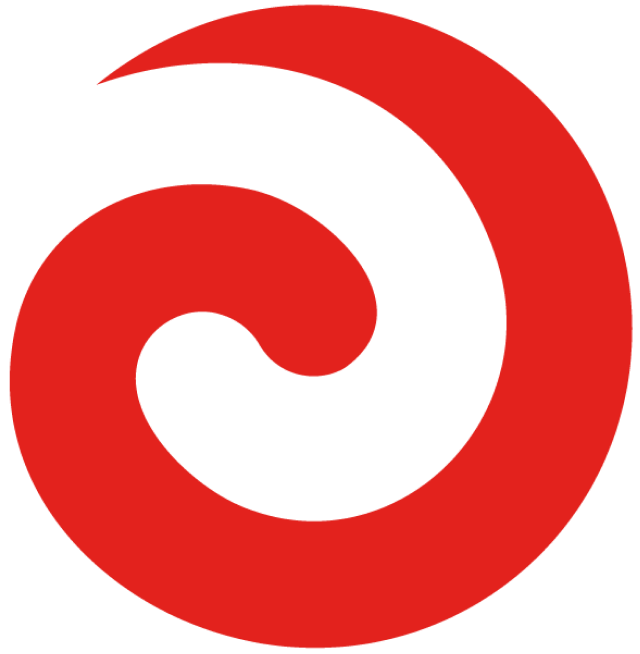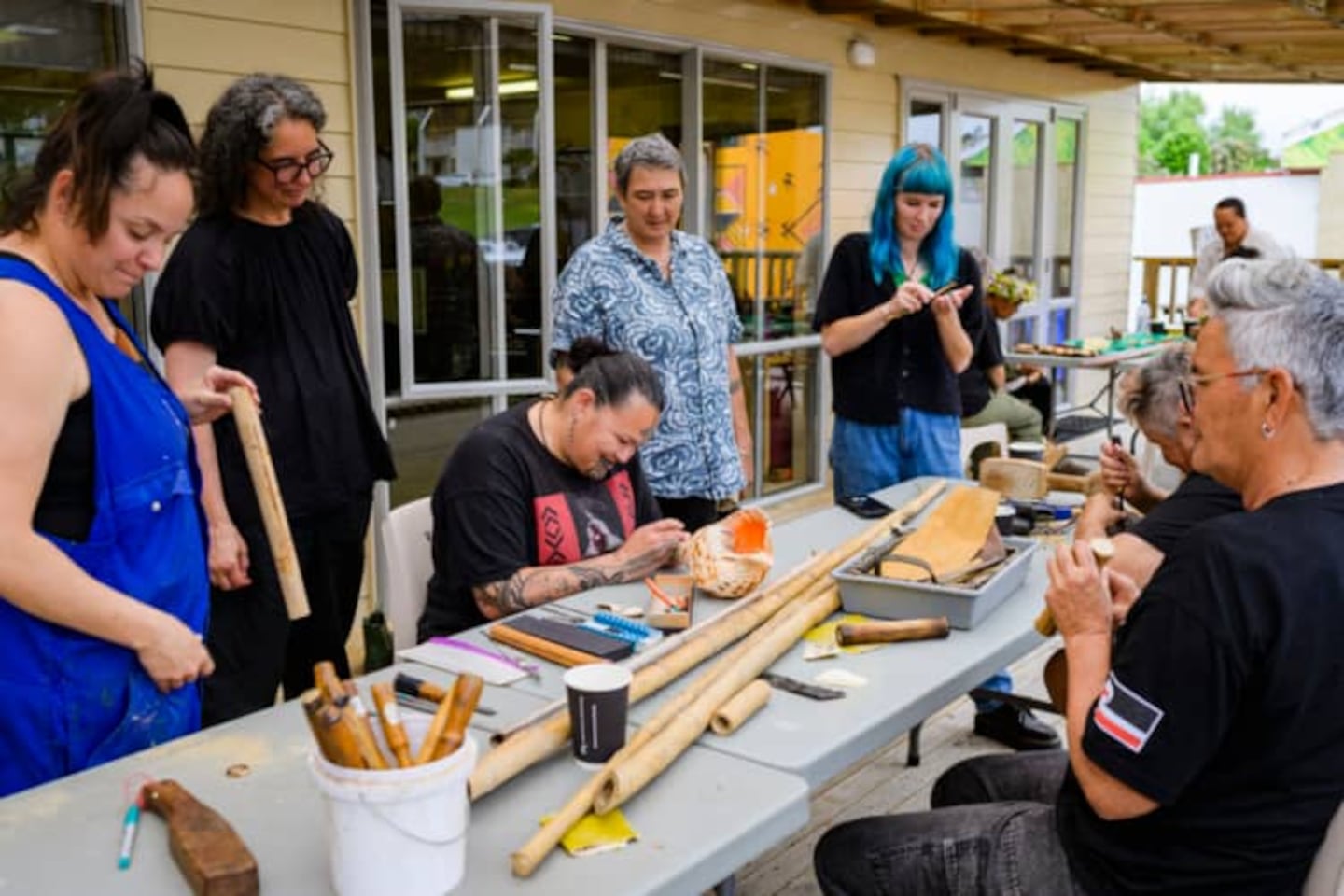This article was first published on RNZ.
By many, Māori carving is considered a tapu occupation with its own tikanga. Women have often not been allowed to be present while a carver is working.
But tikanga can vary and change, and the binary gender division with carving has sometimes been broken.
A new collective of wāhine Māori carvers, Te Ana o Hine, is creating an environment to support women who want to learn the craft.

Te Ana o Hine (the cave of Hine) has recently established a carving studio with Pakuranga gallery Te Tuhi.
Te Ana o Hine member, artist and curator Hollie Tawhiao (Ngāti Tīpa, Tainui), was taught carving by her father after he lifted the tapu on their carving shed.
She would pester him from a very young age, she tells RNZ’s Culture 101.
“My father’s been carving since, I believe, the first pou he put up was in 1986, at Waitomo Caves, so the pou out the front there, he was part of that, and he’s been carving in what was originally a little lean-to shed in our backyard since.
“I was born in 1985, so I’ve been around it my whole life. And it was kind of me being a little hōha, me being a bit annoying, standing at the doorway of his shed, as soon as I could walk, that got me into it.”
Lifting the tapu: Maori women who carve
Culture 10110 August 2025
Queue
Initially, because of the tikanga around tapu in the carving shed, Tawhiao wasn’t allowed to enter, she says.
“The benefit, or the beauty, of being persistent, and probably having very enabling parents, is the fact that I felt very comfortable to bother him as much as I could.
“So, when I was about four or five, he had the tapu lifted from the shed to make it nōa. So, I was able to go in, and essentially, that is exactly what ended up happening.
“I was under his feet most of the time, more hindrance than help. But it turned out to be a very positive experience.”
Master carver Paki Harrison, who mentored her father, was, along with Pineāmine Taepa and Cliff Whiting, a strong supporter of wāhine Māori carvers.
“If you look back, there’s some beautiful kōrero by Paki Harrison, who my dad took a lot of his learnings from when it comes to allowing wāhine to carve or encouraging wāhine to carve.
“Paki, in an interview, stated that as long as wāhine, can do all the mahi, from the karakia, from caring for the ngāhere, the materials, can do the process from start to finish, then it makes perfect sense for them to do it.”
Not that opposition to women carving doesn’t persist in some quarters, she says.
“I’ve had people tell me that my children are going to suffer some kind of mākatu if I don’t stop.”
Her whānau, however, have been a source of constant support in her practice, she says.
“I have been blessed to be raised quite closely with my father and my father’s whānau, and have constant kōrero about my tūpuna.”
She still quotes something her father once said offhandedly when she was very young.
“He was like, ‘it seems counterproductive to cut out half of the people for whom a material culture is for’. Saying that half of us, half of Māoridom can’t practice something which is so enriching and so beautiful seems really counterintuitive.”
The group is currently working on carving a waka kōpapa, a type of shallow-hulled waka, for which they’ve been engaged in some crowdfunding.
“We have a beautiful studio at Te Tohi, but obviously we’re not going to be able to do a gorgeous, 20-metre-long waka taua similar to the ones at Tūrangawaewae Marae.
“But also, that would take too long. That would take a lot of money. And we did discuss how we are not interested in making something like a waka taua, a war canoe.
“Instead, we wanted to bring it down into not just something that’s manageable, but also something that is very every day.”
By RNZ Culture 101.



